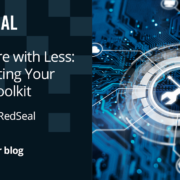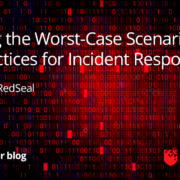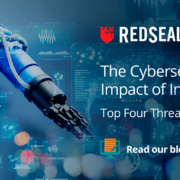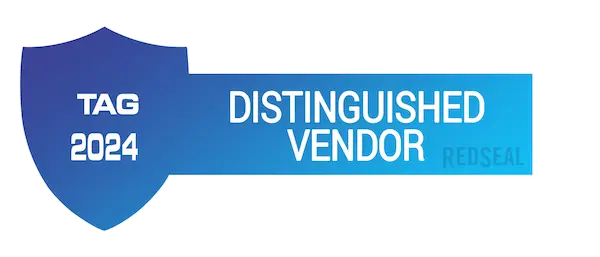How Security Vulnerabilities Expose Thousands of Cloud Users to Attacks
Cloud computing has revolutionized data storage and access. It’s led the charge for digital transformation and allowed the increased adoption of remote work. At the same time, however, cloud computing has also increased security risks.
As networks have grown and cloud resources have become more entrenched in workflow, cloud computing has created larger potential attack surfaces. To safeguard their mission-critical data and operations, organizations need to know chief cloud cyber risks and have to combat them.
Why Cloud Users Are at Risk
Cloud platforms are multi-tenant environments. They share infrastructure and resources across thousands of customers. While a cloud provider acts to safeguard its infrastructure, that doesn’t address every cloud user’s security needs.
Cybersecurity in the cloud requires a more robust solution to prevent exposure. Instead of assuming that service providers will protect their data, customers must carefully define security controls for workloads and resources. Even if you’re working with the largest cloud service providers, new security vulnerabilities emerge every day.
For example, Microsoft says it invests about $1 billion in cybersecurity annually, but vulnerabilities still surface. Case in point: The technology giant warned thousand of cloud customers that threat actors might be able to read, change, or delete their main databases. Intruders could uncover database access keys and use them to grab administrative privileges. While fixing the problem, Microsoft also admitted it could not change the database access keys, and the fix required customers to create new ones. The burden was on customers to take action, and those that didn’t were vulnerable to cyberattacks.
What Type of Vulnerabilities Affect Cloud Customers?
Despite the security protections cloud providers employ, cloud customers must use best practices to manage their cyberattack protection.
Without a solid security plan, multiple vulnerabilities can exist, including:
1. Misconfigurations
Misconfigurations continue to be one of the biggest threats for cloud users. A few examples:
- A breach at Prestige Software due to a misconfiguration using Amazon S3 services caused widespread data compromise. This single event exposed a decade’s worth of customer data from popular travel sites, such as Expedia, Hotels.com, and Booking.com.
- A misconfigured firewall at Capital One put the personal data of 100 million customers at risk.
2. Access Control
Poor access control allows intruders to bypass weak authentication methods. Once inside the network, many organizations do not adequately restrict lateral movement or access to resources. For example, security vulnerabilities in Amazon Web Services (AWS) put up to 90% of S3 buckets at risk for identity compromise and ransomware. The problem? Businesses failed to remove permissions that allowed users to escalate privileges to admin status.
3. Insecure APIs
APIs require access to business data but can also provide vectors for threat actors. Organizations may have hundreds or even thousands of public APIs tied to microservices, leading to a large attack surface. Insecure APIs are cited as the cause of the infamous Equifax breach, which exposed nearly 150 million consumers’ records, along with security lapses at Geico, Facebook, Peloton, and Experian.
4. Lack of Shared Responsibility
Cloud providers manage the security of the cloud, but customers are responsible for handling the security of the data stored in the cloud. Yet, many users fail to keep up their end of this shared responsibility. According to Gartner, 99% of cloud security failures are due to customer errors.
5. Vendors or Third-Party Software
Third-party cloud components mean your networks are only as secure as your vendor’s security protocols. If they are compromised, it may provide a pathway for attackers into your network.
More than half of businesses have seen a data breach caused by a third party. That’s what happened to Audi, Volkswagen, and dozens of others. The infamous REvil ransomware group exploited a vulnerability in Kaseya, a remote monitoring platform, and used it to attack managed service providers (MSPs) to gain access to thousands of customers.
How Can Cloud Users Protect Themselves?
With the acceleration of remote workers and hybrid cloud and multicloud environments, attack surfaces have increased greatly over the past few years. At the same time, hackers have become more sophisticated in their methods.
Since most security tools only work in one environment, it can create a complex web that becomes difficult to manage.
Figuring out how to prevent cyberattacks requires a multi-pronged approach, but it starts with understanding how all of your security tools work together across on-prem, public clouds, and private clouds. You need strategies to monitor all of your networks, including ways to:
- Interpret access controls across both cloud-native and third-party firewalls (service chaining)
- Continuously validate and ensure security compliance
- Manage network segmentation policies and regulations
Security teams must be able to answer these concerns:
- What resources do we have across our cloud and on-premises environments?
- What access is possible?
- Are resources exposed to the public internet?
- Do our cloud deployments meet best practices for cybersecurity?
- Do we validate cloud network segmentation policies?
Without a comprehensive cybersecurity solution that evaluates and identifies potential risks, it will be challenging to mitigate vulnerabilities and identify the downstream impacts from security lapses. Even if you believe you have every security measure you need in place across all of your cloud resources, you need a way to visualize resources, identify potential risks, and prioritize threat mitigation.
A Comprehensive Cloud Security Posture Management Solution
Solving a problem starts with identifying it. You need a way to visualize potential vulnerabilities across your networks and cloud resources.
A Cloud Security Posture Management (CSPM) solution will identify vulnerabilities, such as misconfigurations, unprotected APIs, inadequate access controls, and flag changes to security policies. This helps you better understand exposure risks, create more robust cloud segmentation policies, and evaluate all of your cloud vulnerabilities.
Many CSPM solutions, however, only present their finding in static, tabular forms. It can be challenging to understand relationships and gain full awareness of the interconnectivity between cloud resources. Beyond just monitoring traffic, security teams also need to see how instances get to the cloud, what security points it goes through, and which ports and protocols apply.
RedSeal Classic identifies what’s on your network environments and how it’s all connected. This helps you validate security policies and prioritize potential vulnerabilities. RedSeal Classic can evaluate AWS, Azure, Google Cloud, and Oracle Cloud environments along with Layers 2, 3, 4, and 7 in your physical networks for application-based policies and endpoint information from multiple sources.
RedSeal Stratus allows users to visualize their AWS cloud and Elastic Kubernetes Service (EKS) inventory. We’re currently offering an Early Adopters program for RedSeals Stratus, our SaaS-based CSPM, including concierge onboarding service, so you can see the benefits first-hand.
To learn more about how RedSeal can help you see how your environment is connected and what’s at risk, request a demo today.





